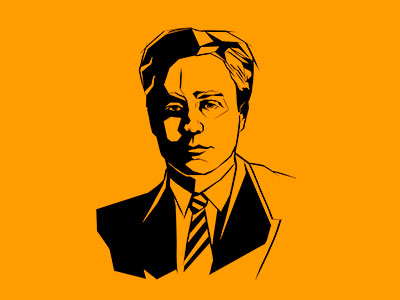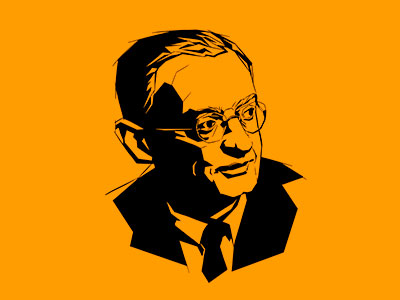Modern housing estates, reformed schools, sensational product design, technical records and artistic energy – despite all the political and economic instability after World War I, the years from 1919 to 1933 were characterized by a powerful spirit of optimism in Saxony-Anhalt. The central German industrial region which had grown rapidly with the wartime economy was striving – under the efforts of many activists and reformers – to become a highly modern region for living and working. This spirit of optimism was shared by artists, designers, architects, engineers, entrepreneurs and politicians. Some of the most important trailblazers of modernism should be presented at this point.
Gertrud Arndt
1903 - 2000
You can see it everywhere – usually young people, alone or in groups, holding a smartphone in an outstretched arm, or on a stick, and smiling at it. We are talking about selfies, of course. But it would be a mistake to believe this type of self-presentation is a modern phenomenon. The selfie was invented in the early 1930s by a Bauhaus member, but back then it was called a self-portrait. read more
Lyonel Feininger
1871 - 1956
“Halle is the most delightful town”, wrote Lyonel Feininger in a letter to his wife Julia. In 1928, the Bauhaus master was invited by the city of Halle to paint a cityscape. read more
Johannes Göderitz
1888 - 1978
Johannes Göderitz decisively shaped Magdeburg's reputation as the "City of the New Building Will". In 1921, the Magdeburg city councilor Bruno Taut had brought him as an employee in his work staff, after the departure of Taut from Magdeburg, the architect took over in 1927 his successor. read more
Walter Gropius
1883 - 1969
Uniting life, craft, and art was the credo of the art school “Staatlicher Bauhaus in Weimar”, founded in Weimar by architect Walter Gropius in 1919. His goal was to establish the “architecture of the future” as a total work of art. Breaking away from traditional architecture, he believed that buildings should be functional. read more
It was part of the spirit of the 1920s, and sports were also a fixed element of the schedule at the Bauhaus. Teachers were employed for regular lessons, including one artist who would later enjoy considerable fame: Karla Grosch, a student of the famous dancer Gret Palucca. She started teaching at the Bauhaus for the summer semester of 1928. read more
Wassily Kandinsky
1866 - 1944
Among other things, he headed the workshop for wall painting, taught in the preliminary course "Abstract Form Elements" and "Analytical Drawing" and later took over the teaching area "Free Painting". In 1926, Kandinsky published his work "Point and Line to Plane", in which he dealt with abstract painting. read more
Paul Klee
1879 - 1940
Musician, writer, or visual artist? For a long time, the future Bauhaus master Paul Klee was unable to decide what he wanted to be: he was very talented and successful as a violinist and played in various orchestras and chamber music ensembles, but soon realized that he would not create anything new in the field of music.read more
Carl Krayl
1890 - 1947
Architect and Magdeburg urban planner Bruno Taut made an excellent staffing decision when he brought in his colleague Carl Krayl and entrusted him to head the “colorful city” initiative, which involved applying color to around 80 facades. Krayl delivered 35 drafts for murals.. read more
Ludwig Mies van der Rohe
1886 - 1969
It sounds like an irony of history: while the two Bauhaus directors Walter Gropius and Hannes Meyer have written architectural history in Dessau with impressive buildings, the third and last Bauhaus director, the star architect Mies van der Rohe, has only one, small building left in Dessau: a drinking hall, embedded in the garden wall of the master house of Walter Gropius. read more
An unusual career at the Bauhaus: with child-friendly furniture and toys to succeed. The "Little Shipbuilding Game" is still a popular toy today. It was designed by a woman who had an unusual career at the Bauhaus: Alma Siedhoff-Buscher. read more
For the Bauhaus it was a sensation: the first, but also the last time in its 14-year history, a woman had become a full-fledged master, but not at the instigation of the master council, but at the express request of the workshop members. read more
Bruno Taut
1880 - 1938
Bruno Taut wanted to create "great architecture for small people", but she had to be colorful. Magdeburg Mayor Hermann Beims had called the architect, who was well-known as an advocate of the garden city movement, in 1921 to the Town Planning Council read more
















